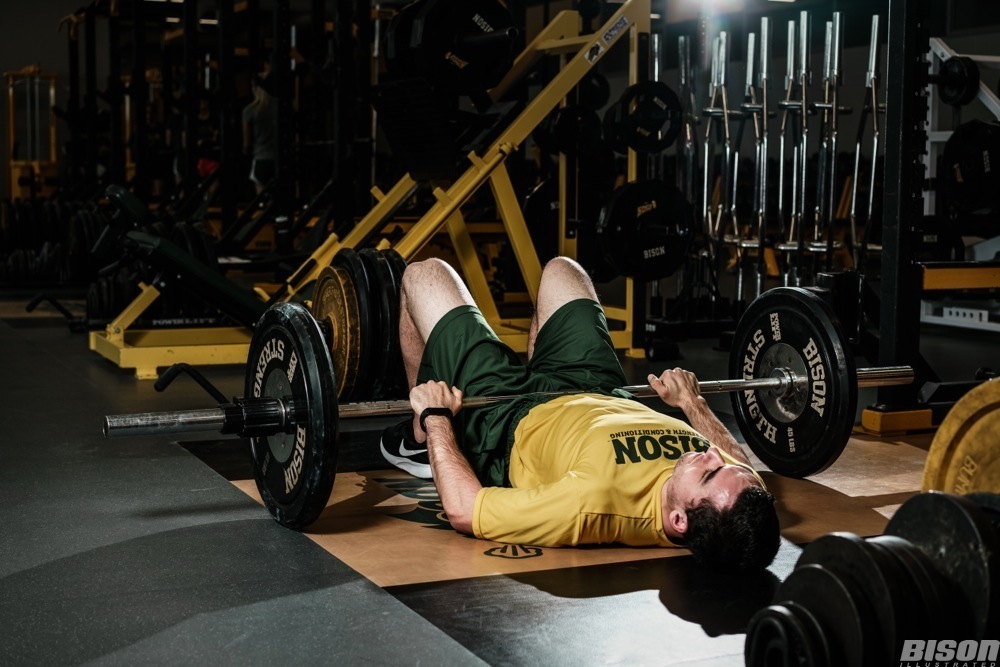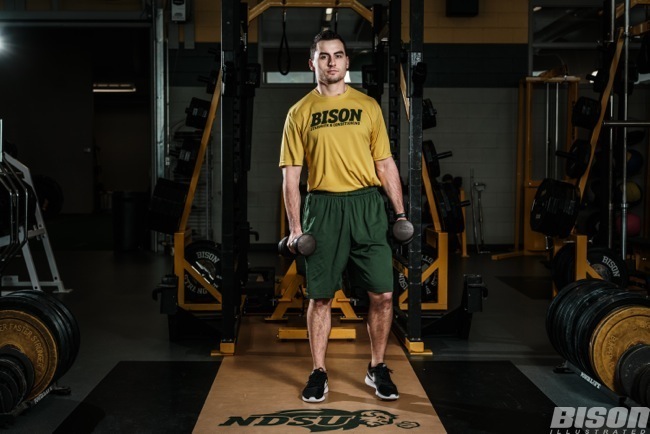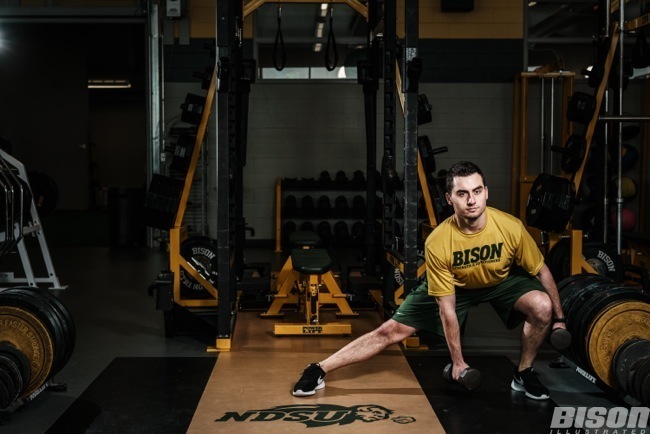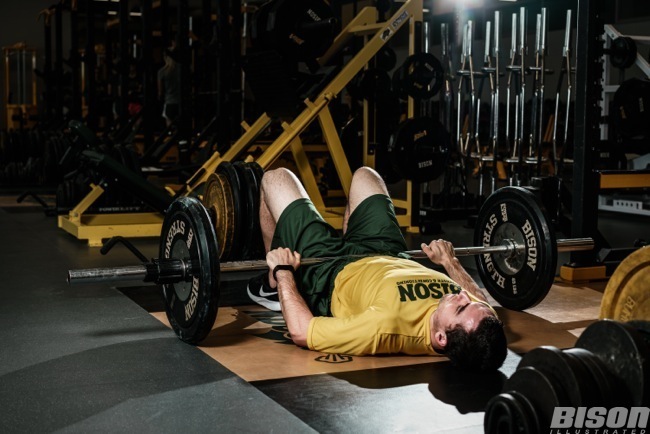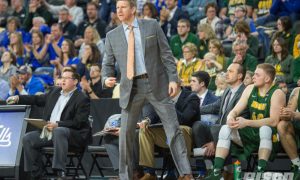We’re not talking about Charles Barkley, we’re talking about crashing the boards
Whoever said basketball isn’t a contact sport has never laced up the sneakers and attempted to gather a rebound in the paint. Here’s what NDSU is doing to make sure their basketball players have a solid foundation for absorbing contact.
Exercise: Side Lunge
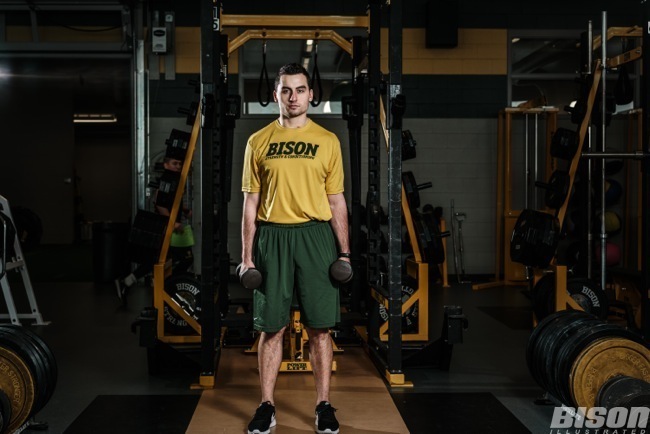
Step 1 – Begin standing up with your feet shoulder width apart and holding a dumbbell in each hand.
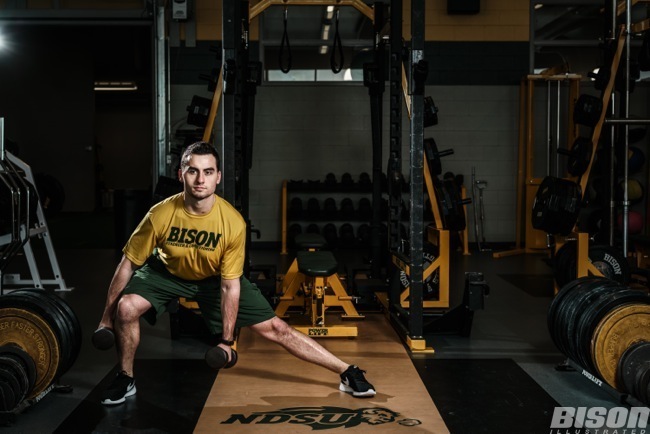
Step 2 – Lunge directly to the right, sinking your hips, keeping your back straight and pause.
Step 3 – Return to the middle.
Step 4 – Lunge directly to the left, sinking your hips, keeping your back straight and pause.
Step 5 – Return to the middle and begin the sequence over until you reach six to eight reps on each side.
*Tip – If you’re feeling unbalanced during this exercise, try holding one dumbbell with both hands in front of your chest before trying the exercise with two dumbbells.
Exercise: Rear-Foot-Elevated Split-Squat

Step 1 – Stand up, holding a dumbbell in each hand. Lift one foot onto the bench at a 90-degree angle and your foot on the ground slightly past your hip.

Step 2 – Bend at the knee with your straight leg into a regular squat position without your other knee touching the ground.
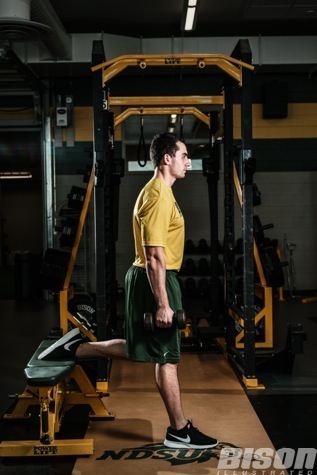
Step 3 – Straighten your bent knee as you pop up, pushing your chest up and keeping your back straight.
Step 4 – Repeat 6 to 10 times before switching legs.
*Tip – This is a useful secondary squat exercise to ensure your strength is balance throughout your lower half and you’re not favoring one side more than the other.
Exercise: Hip Raises
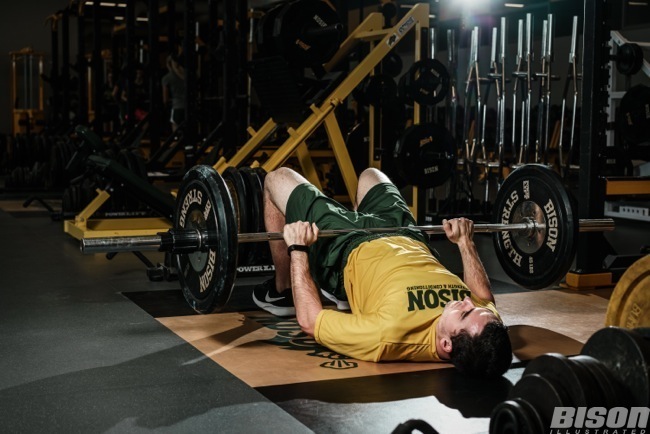
Step 1 – Lay on the ground with the barbell above your midsection with your knees bent. Make sure the bar is just below your waist at the bottom of your hipbone.
Step 2 – Tighten your rear and core and push up, raising your hips and lower back off the ground.
Step 3 – Pause at the top and make sure your shoulder blades are still on the ground and toes are in the air.
Step 4 – Lower your back to the ground and repeat.
*Tip – If you’re trying to strengthen your rear and hamstrings without stress on your knees, this workout is for you.
Developing Progression Through Secondary Workouts
With all the running, cutting and jumping the NDSU basketball team does on the court and in conditioning, strength coach Jason Miller has incorporated creative ways to lessen the impact on joints during strength exercise. The most notable of these workouts is hip raises.
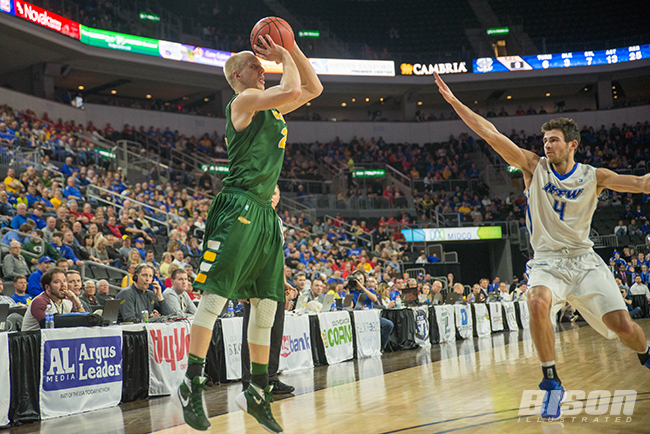
Junior A.J. Jacobson elevates as he shoots a three-pointer from the corner during the semifinals of the 2016 Summit League basketball tournament in Sioux Fall, S.D. against IPFW.
This exercise allows the student-athlete to strengthen their rear and hamstrings without wasting away at their knees and other important joints. The minimal impact has turned injury prevention into a fun and unique workout.
Every exercise shown here for the basketball team is what Miller considers secondary exercises and very rarely does he incorporate all of them on the same day. But one or two of these exercises can go a long way in strengthening muscles around the areas where squats and deadlifts work the most.
Secondary workouts not only attack larger muscle areas, they work the smaller muscle fibers around muscles like the hamstrings. The rear- foot elevated split squat is an exercise NDSU uses across the board for all its sports teams. It challenges balance and improves stabilization around the core and hips along with working the hamstring muscle.
“It also puts a little bit more emphasis on the muscles in the hips to stabilize their knee,” Miller said. “So you’re not favoring one side over the other.”
With a sport like basketball, flexibility and elasticity are so important. Whether the athletes are jumping for a rebound, maneuvering their way past a defender or absorbing contact for a layup, these secondary workouts develop the strength they need while still being able to move freely.

